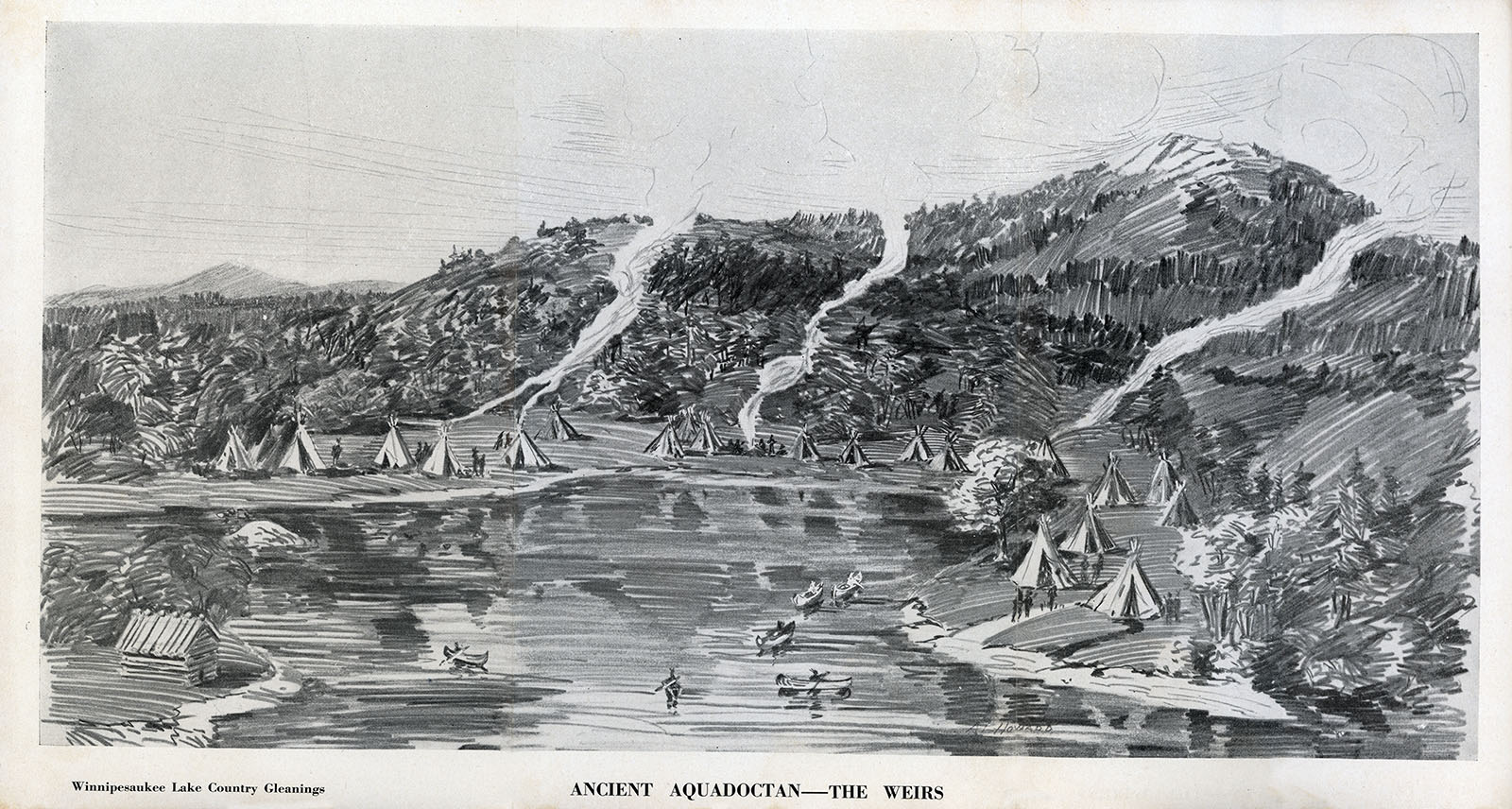Wiccopee Baskets
Wiccopee was the name for a species of leatherwood (dirca palustris), a deciduous shrub, that the Abenaki tribe used to weave into the baskets that they used to scoop shad out of the Weirs Channel. The stems of leatherwood have relatively little lignin and very light wood, so they are surprisingly flexible and have been used in basketry and rope-making, notably by Native Americans, who also used it for sandals and to sew up bark canoes.
In his booklet “Ancient Aquedoctan”, Edgar H. Wilcomb described the plant as follows:
“The Winnipesaukee lake country Indians utilized the tough bark of a shrub, which they called “Wiccopee”, in the weaving of their baskets and fish weirs. This shrub grows in low, swampy places. The writer, when a boy, found plenty of it about the shores of the old mill pond, a short distance from Pickerel Cove. The shrub, which usually grows to a height of three or four feet, with few branches, has a smooth, green bark, which is easily stripped off the whole length of the main stalk, taking the small branches with it. The fiber is so strong that it is almost impossible to break by hand even a small strip, and when a few strands are twisted together into a small rope its strength is astonishing. Aside from the bark the shrub is brittle. “Wiccopee”and witch hazel, another tough shrub, were much used in the construction of fish traps, and withstood the action of water many years when kept constantly immersed. Baskets made of the same materials were equally long-lived.”










